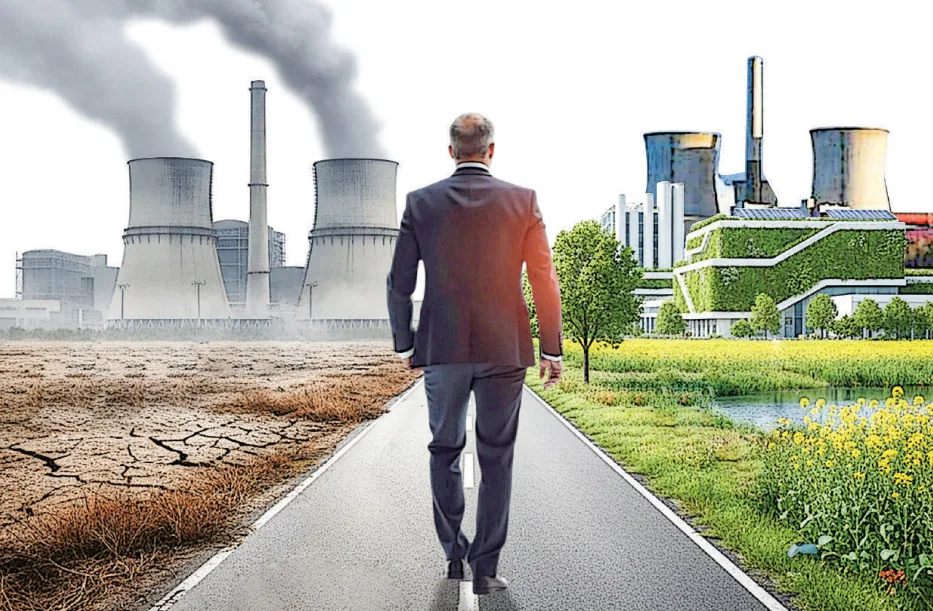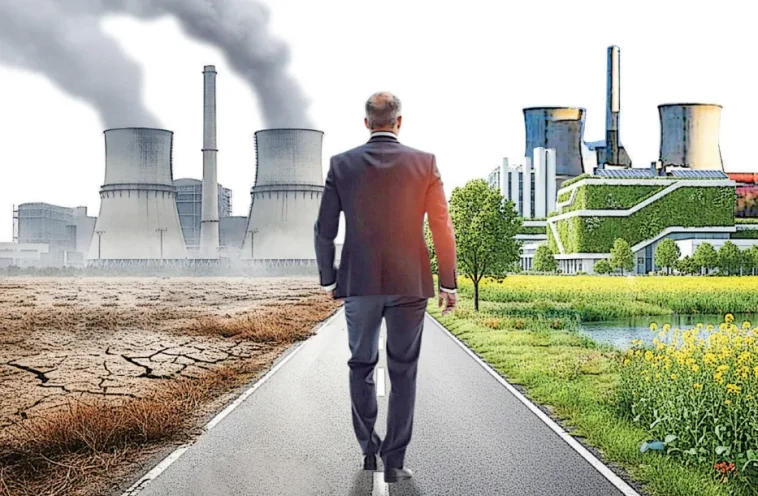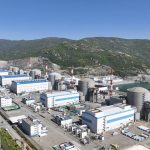
Forging a New Path: Indonesia’s Industrial Decarbonization Journey
Indonesia stands at a pivotal moment in its modern history. With ambitions to become a high-income nation by 2045, the country now faces a challenge that reaches deep into its industrial landscape. The industrial decarbonization roadmap – a blueprint meant not only to guide economic expansion but also to foster environmental sustainability – is emerging as a critical plan for the nation’s future.
In an era when global markets and environmental regulators are pressing countries to refine their environmental record, Indonesia’s commitment to rethinking its reliance on fossil fuels is both timely and essential. By reimagining its industrial base, the nation is poised to tackle the tricky parts of balancing economic growth with the need to reduce greenhouse gas emissions. This editorial takes a closer look at the various strategies proposed, the subtle details of the plan, and the key challenges that must be managed as Indonesia seeks to transform its industrial landscape.
Industrial Decarbonization Strategies and Government Initiatives
The Indonesian government’s release of its Industrial Decarbonization Roadmap in 2025 was more than a technical report – it was a clear declaration that the days of carbon-heavy growth are numbered. The roadmap outlines several key strategies, each designed to address the tangled issues inherent in traditional industrial practices while paving the way for a sustainable future.
Reframing the Nation’s Industrial Base
Historically, Indonesia’s industrial progress has been powered by fossil fuels, forging economic prosperity but also burdening the nation with high carbon emissions. With industry contributing roughly one-fifth of the nation’s GDP and sustaining millions of jobs, the challenge is to find a path that continues to support economic activity while drastically cutting emissions.
At the heart of the roadmap is the realization that traditional industries – from cement and steel to chemicals and textiles – are at a crossroads. Each sector must find ways to reduce its carbon output through energy efficiency, electrification, and process innovation. The government has signaled that fallback on outdated methods could soon incur trade penalties from international markets determined to reward low-carbon products.
Essential Policy Clarity and Financial Instruments
The transformation is not just a technological shift; it is also a challenge to create a regulatory environment that helps industries bolster safe investments in low-carbon technologies. Indonesia’s leadership is pushing for policy clarity around carbon pricing, green sukuk, and transition bonds. By doing so, the government aims to make clear the support mechanisms for industries willing to trade in carbon-intensive methods for greener alternatives.
Clear policies not only guide investment but also foster an ecosystem in which public finance, concessional loans, and multilateral funds can be mobilized. With billions of dollars needed to retrofit factories and build new infrastructure, the public and private sectors must work together to overcome nerve-racking financial obstacles.
Green Energy Transitions and Economic Sustainability
At its core, Indonesia’s industrial strategy is about reconciling economic ambition with environmental responsibility. The blueprint rests on a few super important pathways: energy efficiency, electrification, fuel switching, and process innovation. Together, these approaches form the backbone of Indonesia’s transition toward a green economy.
Boosting Energy Efficiency
Energy efficiency is seen as the most immediate lever to limit emissions. From the rotary kilns in cement plants to the dye houses in textile factories, companies everywhere are urged to do more with less. Techniques such as waste heat recovery, motor upgrades, and process optimization are among the most cost-effective measures that can yield substantial results.
In essence, energy efficiency serves as the trunk that supports all other branches of the green transition. By prioritizing efficiency improvements, industries can lower operational costs, reduce emissions, and secure the breathing space needed to adopt more advanced technologies over time.
Key Efficiency Initiatives
- Waste Heat Recovery: Capturing residual energy from industrial processes for reuse.
- Motor Upgrades: Streamlining machinery to cut power use and shorten production cycles.
- Process Optimization: Revising workflows to reduce overconsumption of energy.
Electrification Coupled with Grid Decarbonization
Electrification features prominently in the roadmap. Industrial processes that rely on coal and natural gas for heat and power are being reexamined in favor of electric technologies. From electric boilers to induction furnaces, the shift to electric equipment is seen as a less carbon-intensive alternative.
However, electrification cannot succeed without a cleaner energy grid. Currently, if factories switch to electric boilers while the grid remains dependent on coal, the overall emissions reduction will be marginal. Therefore, decarbonizing the national grid – through investments in renewable sources such as solar and wind – is an essential piece of the puzzle.
Electrification Strategies at a Glance
| Sector | Traditional Approach | Electrified Alternative |
|---|---|---|
| Steel | Blast furnaces | Electric arc furnaces using scrap |
| Cement | Coal-fired kilns | Electrified ovens with biomass fuels |
| Textiles | Fossil-fuel boilers | Electric and biomass heating systems |
Fuel Switching and the Promise of Renewable Alternatives
The traditional reliance on coal and natural gas in heavy industries is increasingly seen as unsustainable. In the roadmap, fuel switching is a key strategy – guiding industries to substitute fossil fuels with more renewable and sustainable alternatives.
The potential for biomass residues, biodiesel, bioethanol, and even hydrogen represents a diverse palette of options. For example, in cement production, biomass and waste-derived fuels could gradually replace coal in kilns. In the fertilizer sector, green ammonia – produced by combining hydrogen with captured carbon – promises not only to reduce emissions but also to open up new export opportunities.
Fuel Switching Options
- Biomass: Utilizing agricultural residues or waste products as fuel alternatives.
- Biofuels: Replacing petroleum-based fuels with biodiesel and bioethanol.
- Hydrogen: Investing in renewable hydrogen as an answer to processes that require stable, high heat.
Innovative Process Changes in Traditional Industries
While efficiency, electrification, and fuel switching directly address energy use, there are also changes needed in the very chemistry of industrial production. In many cases, the methods used to create essential products produce carbon as an inherent by-product. The roadmap calls on industries to reexamine these methods and to explore innovative alternatives.
Rethinking Cement Production
Cement production is a prime example of an industry loaded with challenges. Its production process involves not only the burning of coal but also a chemical transformation that releases carbon dioxide. The roadmap suggests multiple tactics: using alternative binders, integrating biomass fuels, and eventually incorporating carbon-capture technologies.
These adjustments are not merely technical tweaks – they represent a shift in how products are manufactured to ensure continued competitiveness in global markets that increasingly favor low-carbon alternatives.
Transforming the Steel Industry
Steel production is another sector faced with intense pressure. Traditional blast furnaces are among the most carbon-intensive technologies available. The plan is to phase in electric arc furnaces that rely on recycled scrap metal, gradually moving toward direct reduction methods that use hydrogen as the primary reducing agent.
This approach has far-reaching implications. In addition to reducing emissions, it positions Indonesia to potentially become a leader in green steel production – a field that is expected to be in high demand as economies around the world intensify their efforts to cut industrial emissions.
Modernizing the Chemical and Fertilizer Sectors
The chemical industry is characterized by several sub-sectors, each with its own set of tricky parts. For the olefins, methanol, nitric acid, and fertilizers, energy use is heavy and the production processes are laden with emissions. The roadmap is full of ideas for each:
- Olefins: Increasing energy efficiency and exploring electrification in steam crackers.
- Methanol: Transitioning to synthetic methods that combine renewable hydrogen with captured carbon.
- Fertilizers: Improving efficiency in ammonia and urea production, with a future leap toward hydrogen-based production.
Overcoming Challenges in Transforming Traditional Industrial Processes
Transitioning from a fossil fuel–dependent industry to one that embraces green technologies is not a simple task. It is a process loaded with tricky parts, from managing the fine details of new production methods to retraining workers and building an ecosystem that supports sustainable practices.
Implementing Costly Technologies
Many of the proposed technologies – such as carbon capture, utilization, and storage (CCUS) – are expensive and technically challenging. While they offer a promising safety net for industries with emissions that are hard to eliminate through efficiency improvements alone, they require significant upfront investment. Cement, steel, and specific chemical processes might rely on CCUS as a way to bridge the gap until more cost-effective solutions are developed.
The Role of Policy and Coordination
Success in decarbonization depends on clear and consistent policy. Industries need assurance about when and how carbon pricing will be implemented, what regulatory standards they must meet, and what incentives are available. This is especially important in a country where bureaucratic silos and political cycles can sometimes get in the way of coordinated action.
The government’s task now is to steer through the complicated pieces of industrial policy by creating regulatory clarity and offering financial mechanisms to lower the economic risks of adopting new technologies. In this sense, the roadmap serves as both a plan and a call to action: the economic future of the nation hangs in the balance, and finding a path through this maze is super important.
Regional Competitiveness in a Shifting Global Market
Beyond its domestic implications, Indonesia’s industrial transformation carries significant geopolitical weight. In the era of global climate accords and carbon border adjustments, industries that fail to shift toward low-carbon production risk being priced out of global markets – particularly in regions like Europe where sustainability is a super important part of trade policy.
Competing for Investment in Southeast Asia
ASEAN neighbors such as Thailand and Vietnam are already working hard to attract investments in green technologies and electric vehicle production. For Indonesia, showing a commitment to decarbonization is essential not only to safeguard its existing export markets but also to secure its leadership position on a regional scale.
Global investors are likely to favor countries that align their industrial strategy with green policies. Clear regulatory pathways, foreseeable economic benefits from export opportunities, and the attractive prospect of low-carbon products all contribute to making Indonesia a potentially appealing destination for investment – provided the necessary reforms are executed with urgency.
Anticipating Trade Barriers and Penalties
Trade mechanisms such as the European Union’s Carbon Border Adjustment have already signaled that carbon content in exported goods will soon be a key parameter. Industries that remain dependent on fossil fuels face the risk of punitive tariffs, which could diminish their international competitiveness.
Indonesia must therefore act swiftly to revise its industrial practices. By aligning domestic production with international standards for low-carbon materials, the nation may not only avert future trade barriers but could also capture premium markets that reward green manufacturing.
Mapping Out a Collaborative and Financially Supported Transition
The industrial transformation outlined in the decarbonization roadmap is not one that can be achieved in isolation. It requires remarkable collaboration between government bodies, private firms, and financial institutions.
Why Investment in Green Technology Is Critical
The costs involved in retooling factories and retrofitting production lines with energy-saving technologies are overwhelming for many private companies. Recognizing this, the government is calling for a robust framework of public finance, green bonds, and concessional bank loans to soften the economic impact on industries.
The plan calls for billions of dollars in annual investments. Such financial backing could come not only from national budgets but also from multilateral funds, green sukuk, and transition bonds that require cooperation across both public and private sectors. This ecosystem will help companies manage the nerve-racking expenses associated with adopting new technologies while securing their future competitiveness in a sustainable world.
Key Investment Mechanisms
| Mechanism | Purpose | Example Application |
|---|---|---|
| Green Sukuk | Mobilize public and private finance | Funding factory retrofits |
| Transition Bonds | Support shift from fossil fuels | Investment in renewable energy infrastructure |
| Concessional Loans | Lower borrowing costs | Upgrading industrial equipment |
The Need for Regulatory Coordination
Successfully managing the path toward decarbonization means that government departments must work in close coordination with each other and with the private sector. Regulatory clarity is essential to avoid creating a situation where industries are caught between conflicting policies or where early adopters face disproportionate penalties while competitors stick with outdated and cheaper methods.
With the legal obligations in existing environmental protection laws reinforcing the need for change, the industrial roadmap is not just an economic initiative – it is an ethical and legal mandate to avoid environmental degradation and safeguard public health.
Looking Ahead: A Future of Prosperity and Sustainability
Indonesia’s decarbonization agenda is as much about preserving the environment as it is about maintaining economic might. The successful implementation of this roadmap will ultimately determine whether the nation is able to continue its industrial growth trajectory while meeting its international climate commitments.
Securing a Leadership Role in Southeast Asia’s Green Economy
If Indonesia can effectively work through the tricky parts of decarbonization – from energy efficiency improvements and electrification to process innovation and fuel switching – it stands to redefine its industrial identity. Moving from a heavy reliance on fossil fuels to embracing green technologies will allow Indonesia not only to meet but also to exceed the stringent sustainability standards emerging worldwide.
By positioning itself as a hub for green steel, sustainable chemicals, and low-carbon textiles, the country can capture export opportunities in premium markets. This would enhance Indonesia’s voice in regional economic negotiations and help secure a more stable economic future.
The Ripple Effect on Domestic and Global Scales
The reforms proposed in the decarbonization roadmap have the potential to generate significant benefits well beyond emission reductions. Cleaner industries typically mean healthier citizens, and a working environment that saves on energy costs can lead to cheaper, renewable power for consumers. Over time, these changes can create a ripple effect: bolstering exports, reducing energy imports, and ultimately contributing to a more stable economic landscape.
As global markets increasingly favor products that meet strict environmental standards, industries that evolve now will be best positioned to compete later. In this way, the decarbonization effort is not only a means of reducing greenhouse gases – it is an investment in the nation’s long-term prosperity.
Conclusion: Stepping into a Greener Future
Indonesia’s Industrial Decarbonization Roadmap is a blueprint for one of the most significant transformations in the country’s modern history. It represents both a response to the pressing signal of climate change and a commitment to redefining the industrial landscape towards a path that is green, competitive, and economically sustainable.
While the journey ahead is filled with confused bits and intimidating challenges, the roadmap lays out a clear set of strategies – energy efficiency, electrification, fuel switching, and process innovation – that together form a holistic approach to a low-carbon future. The initiatives outlined are not merely technological fixes but are part of an integrated effort to secure a dominant position in Southeast Asia’s evolving green economy.
For Indonesia, the time to act is now. Policy clarity, coordinated investments, and robust financial support can help the nation steer through the twists and turns of this industrial transformation. If managed well, the decarbonization journey will not only protect the environment but will also propel Indonesia to new heights of economic competitiveness on the global stage.
As the centennial milestone of 2045 approaches, the decision is clear: Indonesia must choose between clinging to a carbon-heavy model that will increasingly falter in a low-carbon global market or embracing a visionary roadmap that secures both prosperity and sustainability for future generations. The constitution, the law, and the practical demands of an interconnected global economy call for a commitment to a greener way forward. The courage to implement this roadmap could well be remembered as the defining moment when Indonesia took a decisive step toward a sustainable future.
Ultimately, the task at hand is not small. It will require every stakeholder – from government agencies to private firms, investors to workers – to figure a path together through a labyrinth of technical challenges, policy adjustments, and economic pressures. Yet, with coordinated effort and resolute leadership, Indonesia’s industrial decarbonization roadmap can transform the nation into a beacon of sustainable growth, demonstrating that it is indeed possible to marry prosperity with environmental stewardship while charting an innovative course in the 21st century.
Originally Post From https://observerid.com/forging-a-green-future-indonesias-industrial-decarbonization-roadmap-toward-net-zero-by-2060/
Read more about this topic at
The Next Chapter for US Green Industrial Strategy
Green industrial policies


